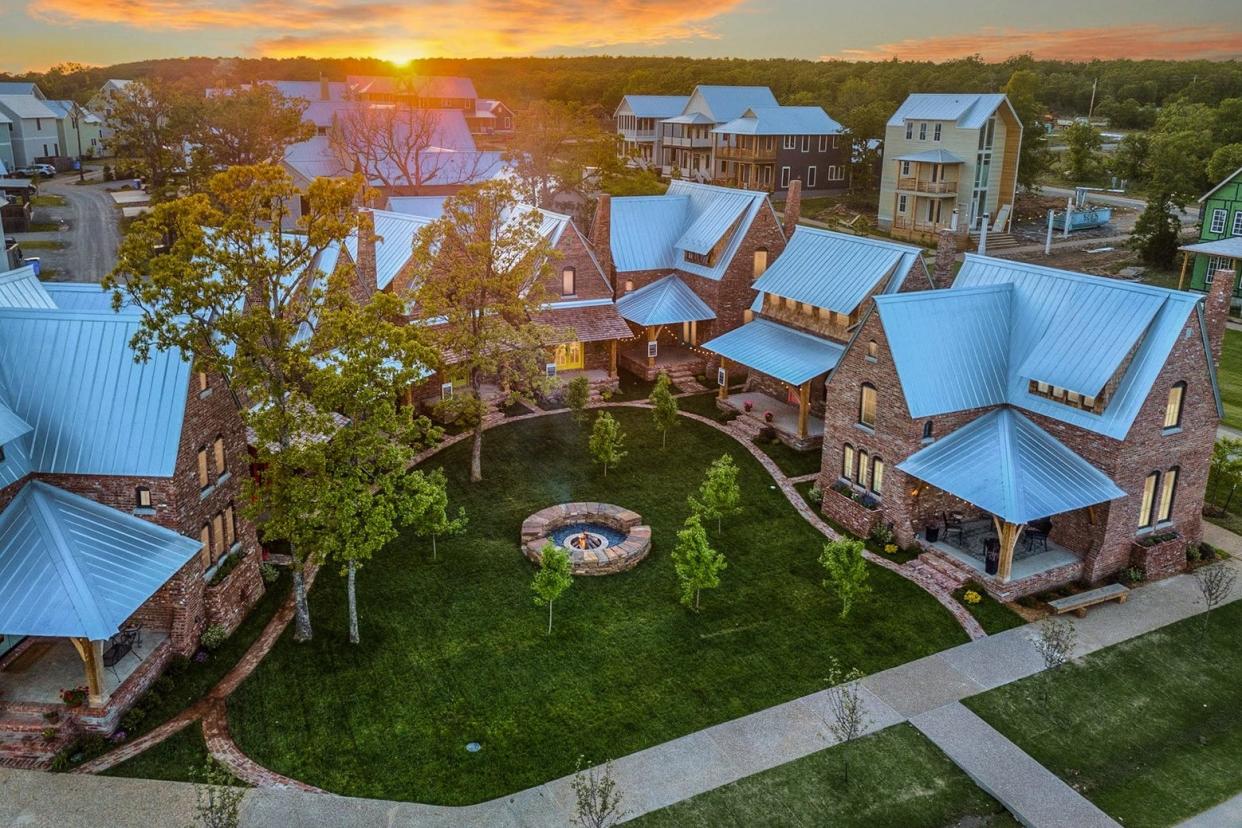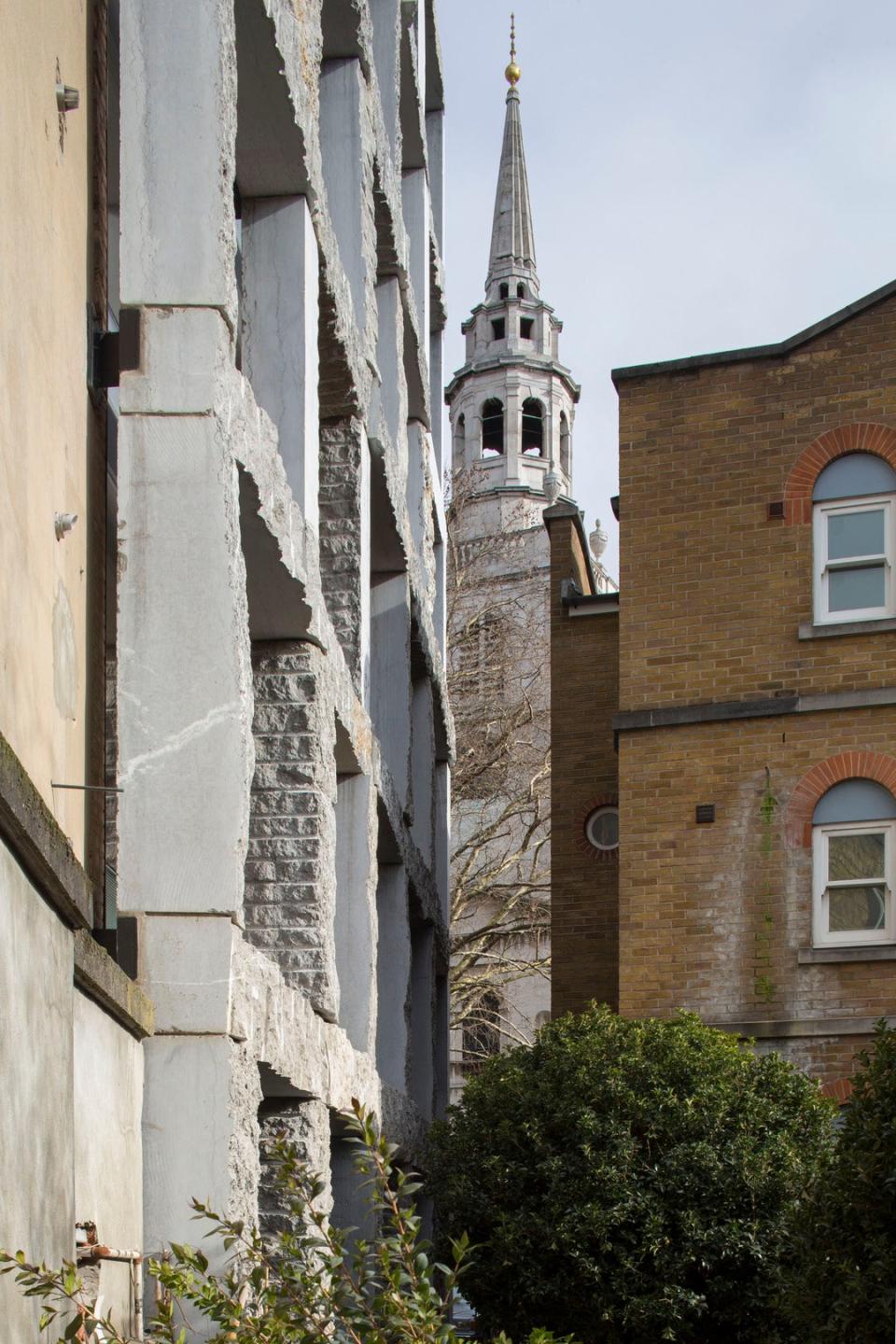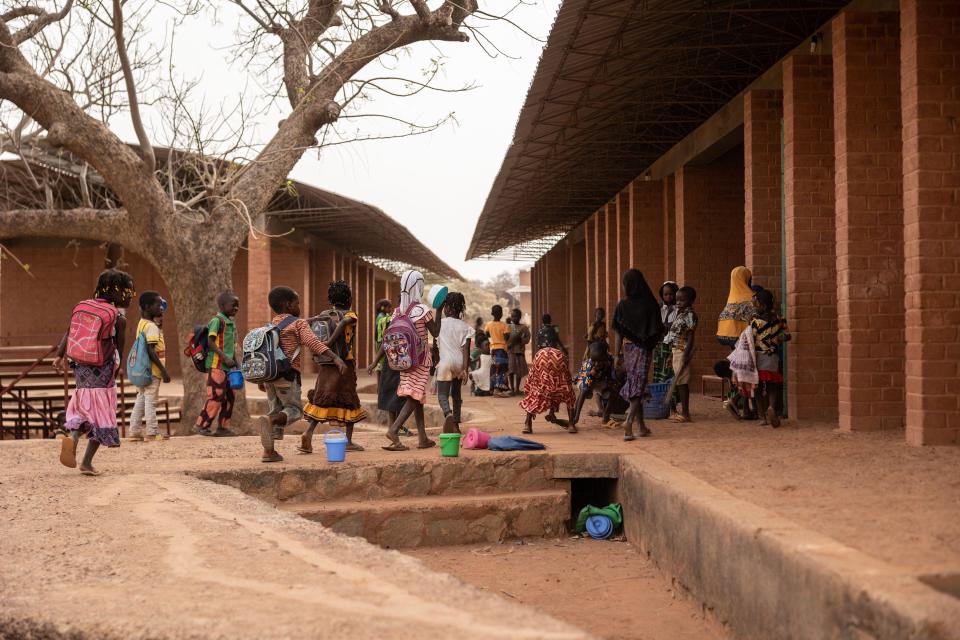What Stone-Carving Robots Tell Us About the Architecture of the Future

- Oops!Something went wrong.Please try again later.
Last week, a pair of videos circulating on social media caught my eye. Each showed a robotic arm milling a block of marble into a fine, classical sculpture. The drills hover and whir, circling their work, while water washes dust to the floor.
Never stand behind a robot arm.
Unless you’re a trained professional. pic.twitter.com/tyf3JJHSwF— Micah Springut (@mspringut) July 20, 2023
One of these cyborg sculptors belongs to Robotor, a company based in Carrara, Italy. Robotor’s inventions have been commissioned to re-create the Arch of Palmyra and copy the Elgin Marbles. Basically, high-quality duplicates. The appeal of this is obvious: There is (was) only one set of Elgin Marbles—and a lot of people, particularly in Greece, would like to gaze upon them. A robot has produced a facsimile of the original, allowing copies to live in different museums around the world.
The other cyborg sculptor I saw belongs to Monumental Labs, based in Mount Vernon, New York. Founder Micah Springut similarly wants to bring cut rock to the people, but his goals are loftier. “Monumental Labs is developing the infrastructure to build highly ornamented classical structures on a mass scale,” the mission statement reads, “and to create extraordinary new architectural forms.”
Springut’s thesis is that we have lost the ability to build the kind of buildings people like best—ornate ones. Think the Lincoln Memorial or the Tribune Tower. The creation of these kinds of structures largely halted a century ago, when industrial materials like steel and concrete entered the scene. Buildings became flatter, sleeker. Less was more. By reducing the cost of chiseling, Springut reasons, architects can once again embrace the decorative flourishes of carved stone. His firm’s first project, the restoration of an 1880s hotel facade, is underway in New York City now.
At the core of Springut’s operation is a modern technique known as CNC milling—the 3D, computer-programmed drilling that produces countless components for automobiles, hospitals, and industry. The difference here is that a seven-axis industrial arm is working on materials that haven’t been considered very useful since the construction of the Brooklyn Bridge. The robot arm is impressively good at work once reserved for skilled craft artisans, though it’s not quite ready to replace them; a human still carves the finishing touches.
For Springut, robots will make our construction, ironically, more human. “What if we could build in a style where there was ornament, texture, motifs from our lives, all that stuff that disappeared when we mechanized our construction industry?” he asked me.
What if, indeed. Springut is not after just restoration and replication. Perhaps his robots will unleash architectural possibility—imagine buildings adorned with sculptural Bitcoins, GMO corn, computer chips, and other symbols of modern wealth creation, intriguing passersby and leaving a legacy for future generations.
On the other hand, the prospect of a revitalizing contemporary design through classicism is not exactly novel. Just last month, Congress decided to revisit a Trump-era proposal to mandate classical design for federal buildings, robot sculptor or no. The new British king, Charles III, has made the revival of pre-modern architecture his life’s work—he even built a whole town of old-fashioned buildings. On social media, popular accounts promoting a hodgepodge of different European building styles, from medieval villages to Gothic cathedrals to Beaux Arts facades, have linked this architectural mood board to white supremacy—and made its disappearance a symbol of Western decline.
This reactionary philosophy dates back half a century or more, and in its most innocuous guise was outlined by Tom Wolfe in his 1981 manifesto From Bauhaus to Our House. Contemporary architects, Wolfe breezily argued, had brainwashed their clients into constructing glass boxes and worker housing that regular Americans neither liked nor understood. Simply put, the world wasn’t as beautiful as it used to be, and what the Everyman really wanted was New York’s old Pennsylvania Station.
But intellectual conspiracy via some elite cadre of designers does not really explain the popularity of modernism. The question of changing taste is hard to gauge. What explains the popularity of the most influential building of the past quarter century, the Guggenheim Bilbao? (Not to mention its cousin on 5th Avenue.) These are structures with harsh, clean lines, with no trace of human touch—and they are an essential stop on the Everyman’s vacation to northern Spain, or New York. True, his itinerary will also include castles and ruins. But do people love ornament—or just old stuff? And whose culture would really get represented in the stone carvings commissioned by our real estate titans, anyway?
If, on the other hand, your theory of modern materials and design is rooted in economic fundamentals—in which the use of older natural resources like stone declined as a result of rising labor costs and a streamlined, globalized construction industry—then technological progress offers some exciting possibilities. Springut isn’t the only person using new cutting-edge tools to give old things new powers. Among these designers, the problem with modernism is not in its radical designs, but in its use of materials, especially carbon-intensive steel and concrete. And the hope of the old ways is that stone, wood, and brick can build a city that’s more pleasant, lasting, and ecologically sound—whatever the architectural style.

This throwback in materials doesn’t always—or even typically—involve indulging in historical pastiche. The most well-known example of this phenomenon is the rise of mass timber, in which wooden boards are glued into load-bearing beams capable of supporting buildings hundreds of feet high. Many mass timber builders have rejected concrete architecture on ecological grounds, since cement production is said to account for nearly 10 percent of global emissions. But there isn’t any nostalgia on display here. Mass timber structures owe little to the log cabin, and some designers believe that the technology will give birth to a new architectural language. These buildings of the future may be made of wood, but they will look and feel futuristic.
Like the trads, the timber people have a spiritual argument for their technique. They often say that wooden buildings are associated with good physical and mental health, higher comfort levels, and a general feeling of warmth and contentment. Timber isn’t just ecologically superior, the logic goes; it’s also hard-wired into our brains to signify shelter. But it’s also just practical in a way that those ornate carvings aren’t. If timber construction remains a high-end product, that’s both because it’s relatively new—and because the externalities of existing energy-guzzling construction are not properly priced.
Something similar is going on, in the larger architectural world, with stone. Steve Webb, the director of the London-based firm Webb Yates Engineers, convinced me that stone is at once elegant, beloved, and environmentally sound, and—with a little technological razzmatazz—can fulfill many of the structural functions today assigned to steel or reinforced concrete. “The building industry is grinding through millions of tons of coal to make cement, when we’re surrounded by mountains of rock,” Webb laments. He says that post-tensioned stone—blocks strung through with steel cable, like beads on a necklace—can be structurally and economically competitive with steel or concrete. Stone is also considerably better for the environment, since it is sitting in enormous quantities right beneath our feet.
He shares with the architectural reactionaries the impulse toward rawer, less manufactured surroundings. “You can see the materials here: There’s nothing fake. It’s undecorated. That’s why people love stone bridges, castles, solid-timber Russian churches.” He divides European architecture along the familiar tomato-potato, olive oil–butter, Catholic-Protestant line—but between the continent’s resources of timber (in the north) and stone (in the south). They work well together.
But the buildings Webb engineers are bracingly modern. “I want an architecture that derives from the pragmatics of the structure,” he says. “I am not espousing a return to decorative neoclassicism.” One of his buildings, 15 Clerkenwell Close, designed by the architect Amin Taha’s studio Groupwork, won a national prize from the Royal Institute of British Architects in 2018. If its limestone structure is a throwback to anything, it’s less the fine stone houses of the Royal Crescent and more Stonehenge.

Even brick is having a moment. The architect Francis Kéré, last year’s Pritzker Prize winner, has used an innovative cement technique to shore up the traditional compressed-earth bricks of his native Burkina Faso. The result is an architecture that’s intended to displace the carbon-heavy cinder-block design that predominates in fast-growing African cities, modern and vernacular at the same time.
Other firms have tried to design low-carbon bricks. For the Design Museum Ghent, for example, the studios Carmody Groarke and TRANS Architectuur Stedenbouw collaborated on a “waste brick” made from recycled concrete and glass.
Regular old brick is more processed than stone or timber but better for the environment than many other elements of the globalized supply chain. “It takes a lot of energy to make a brick,” the builder Clay Chapman, a brick aficionado, concedes. But focusing solely on inputs ignores the results, which, in the case of brick, can last a very long time. “We’re not accustomed to looking at ROI beyond our life, and that’s the problem.”
Chapman’s inspiration is an idea he calls the “thousand-year house.” His homes in eastern Oklahoma read as unabashedly traditional, but, he says, that design is rooted in utility, not aesthetics. A gabled roof to shed water. A rectangular footprint to create flexible space. If he is recycling materials and designs from the past, it’s not just for aesthetics.
Still, some things have changed. Chapman’s tool of choice is a telehandler, an all-terrain tractor-forklift that can lift loads of bricks dozens of feet in the air. It’s a lot easier to build a brick house than it used to be.

